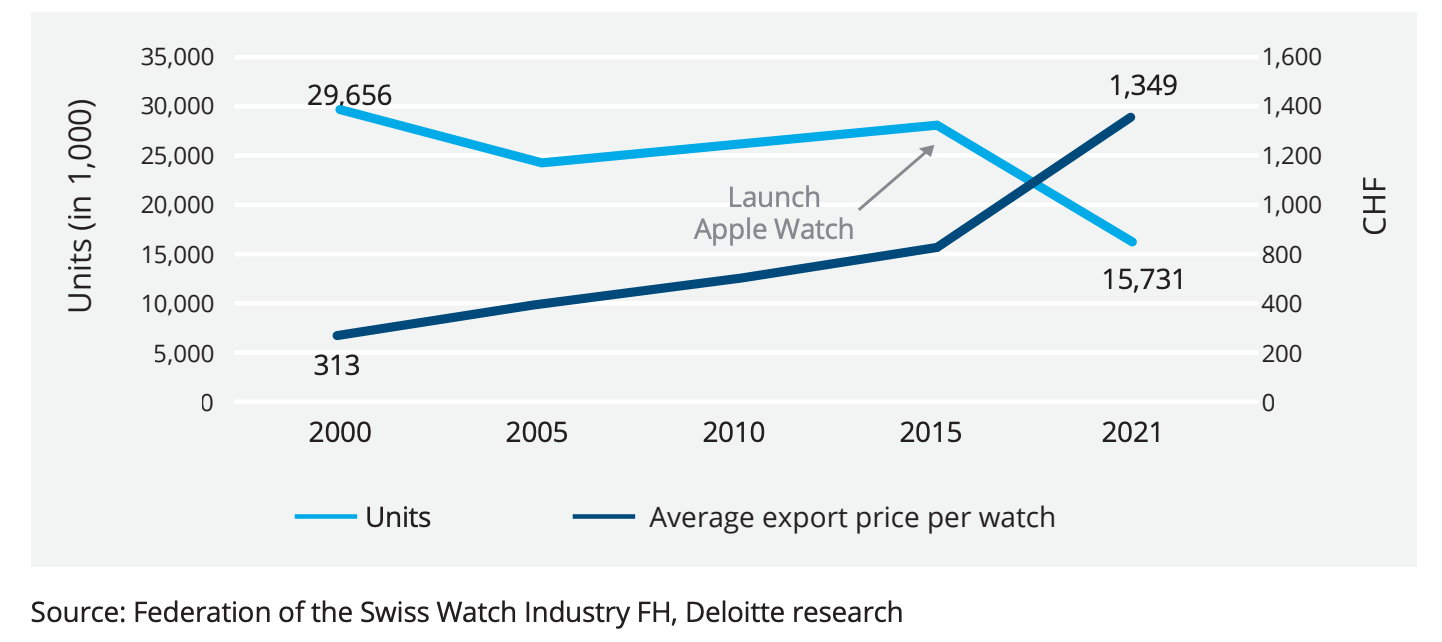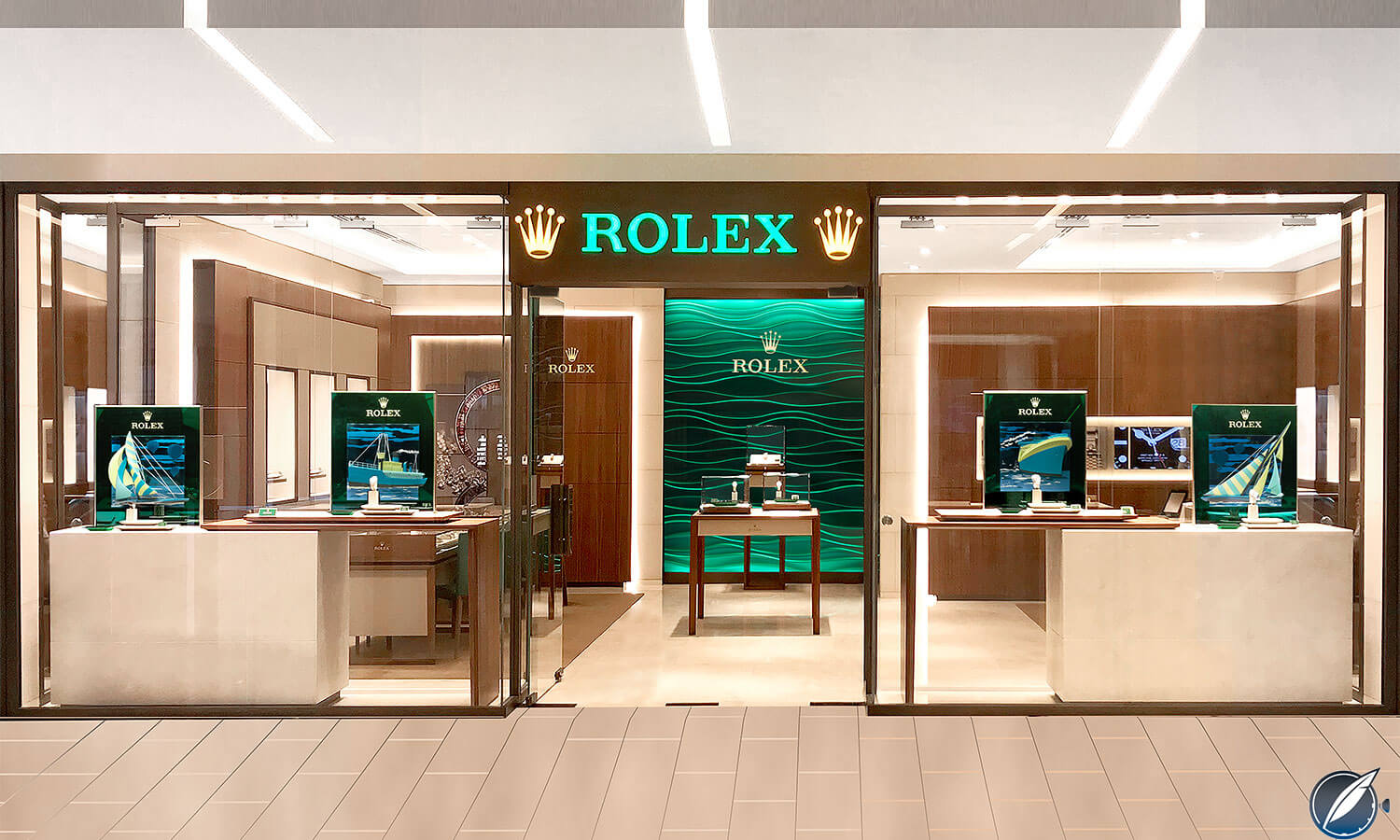Is The Watch Bubble About To Burst? Yes, But Not For All. And With Luck, You Might Be Able To Buy A Rolex Again
by Ian Skellern
As with real estate and many other market sectors, the mechanical watch industry has a long history of being cyclical. Recessions and global events reduce demand, things gradually get better, demand increases, brands ramp up production, economies and demand cool again, and a surplus of watches in stores and in manufacturing and distribution pipelines leads to heavy discounting and fueling the cut-price grey markets.

Then it all starts over again.
And here we are again, with war between Russia and Ukraine not only costing a mind-blowing fortune for many countries, that’s also money that could be invested more productively elsewhere.
Then there are rising prices worldwide due to fuel and food shortages causing both pain and possibly large-scale recessions.
Oh and let’s not forget COVID-19. While far from over in much of the world, its impact has lessened — at least compared with the last few years — in many countries. Except one big one: China. And not only has the rising Chinese middle class been fueling demand for luxury goods for years, but it has also been an important manufacturing base for many of those same goods. And after putting their hands in the air giving up on keeping COVID at bay, the Chinese economy is going to be already seriously impacted by millions of people off sick and dead, leading to lower productivity and lower demand.
So, it’s looking like a perfect storm that will cause demand for high-end mechanical watches to go into freefall once again, just as it always does. Or will it?
Here we go again?
What both nearly destroyed the Swiss mechanical watch industry and saved it was the quartz crisis in the 1970s and early ‘80s. The advent of cheaper, more accurate, and more reliable quartz watches seemed to toll the death bell for mechanical watches. But just as the arrival of photography didn’t destroy the art of painting, battery-powered watches didn’t destroy mechanical watches because the latter stopped competing with them as time-keeping instruments.

MB&F Horological Machine N°6 Final Edition
Mechanical watches became luxury objects that happened to indicate the time, as MB&F epitomizes with their Horological Machines.
And that saved the Swiss watch industry. But people are greedy, brands are greedy, and shareholders ever want more and more. Luxury is as much defined by exclusivity as it is by price. Thanks to rising global incomes over the last decades, much of it in China, more and more people could afford expensive things they didn’t really need. But if everyone has something, even if it’s expensive, what makes it special? Exclusivity. To some extent we all tend to covet what we don’t have.
Rising demand post quartz crisis led brands to ramp up production and invest in state-of-the-art machines and equipment to make more and more watches for less and less money. Highly skilled watchmakers became less in demand as they were replaced by production line assembly workers. And instead of selling exclusive high-end watches, brands increasingly relied on fancy marketing campaigns rather than innovative watchmaking to keep boosting demand.
Swiss watch exports in units fell steadily in the last decade from a high of just under 30 million in 2011 (29.8 million) to just over 20 million (20.6 million) last year. This year, they will drop significantly below 20 million in 2020.
So what’s different this time?
Despite the perfect storm of adverse global turmoil hitting the watch industry, there’s a lot to be positive about. While watches in the low and mid-end market sectors have been struggling for many years, because they are relatively mass-market rather than exclusive luxury, the higher-end brands have continued onwards and upwards.

2021 was the strongest for the Swiss watch industry ever. Export values reached CHF 21.2 billion, slightly surpassing the 2014 record and comfortably ahead of pre-Covid levels. While the number of watches shipped from Switzerland decreased by three percent overall in 2022, the value increased by 12 percent. And the higher-end timepieces outperformed all other sectors.
According to the 2022 Deloitte Swiss Watch Industry Study, “stronger growth is predicted for watches retailing at the high-end (CHF 5,000 – 25,000) and very high-end (> CHF 25,000) segments, whereas mid-range watches are expected to stagnate. Entry level and watches retailing up to CHF 1,000 are expected to decline in the coming year – these segments compete most directly with smartwatches and their foreign counterparts.”
Why aren’t things much worse already? Thank COVID-19
Just as the quartz crisis led to the transformation and revival of the mechanical watch industry, the COVID-19 crisis has led to an explosion in demand for high-end watches. The global market for expensive mechanical watches has ballooned, and the potential market hasn’t simply grown like a child’s party balloon, it has inflated like an enormous meteorology balloon. People with spare money in their wallets and no place to spend it on travel and fancy restaurants went on line and shopped. And among other things they shopped for watches. And they didn’t just shop, with more time on their hands thanks to working from home (how many hours are wasted commuting?) and nowhere to go, they also read and researched online. And as most watch articles online cover the most popular brands and watches, these quickly sold out, creating even more exclusivity that drove even higher demand.
However, it wasn’t just the most popular brands and watches that saw a massive increase in demand; so did the boutique brands and independent watchmakers who were hitherto practically unknown to the general watch collecting world: unfortunately not everyone read Quill & Pad before, but our visitor traffic jumped significantly during COVID lockdowns and I’m sure all of the online watch publications saw a similar traffic spike.
Going back to the lower (by volume) watch export figures in 2022 coupled with overall higher value export figures, there’s hope that the big brands have learnt to rein in overproduction, and even if they haven’t, there’s hope that the excess demand will largely compensate for a market slowdown.
And Independents?
Independent watchmakers and boutique brands are in an even stronger position to weather a slowdown. For many, if not most, demand exceeds their production capacity by many multiples. Many don’t just have long waiting lists, they have closed waiting lists. Even if demand for the smaller brands drops by half, that’s likely to simply reduce the length of their wait lists, not eliminate them.
The biggest risk for the new generation of independents isn’t finding clients, it’s managing success and having no experience of harder times. Brands like Urwerk, De Bethune, Grönefeld, F-P. Journe and Greubel Forsey struggled for decades to sell their watches. Even Philippe Dufour lived from hand to mouth for decades, continually struggling with cashflow and supply issues. The brands that went through years of hard times (hopefully) learned lessons they will not forget while the good times roll. The new generation of independents doesn’t have that experience to fall back on.
Lest we forget: the secondary market
And then there’s the secondary market. When I started my life in horology, if you wanted to sell a watch you went on the buy-and-sell boards some of the forums had, or hopefully knew somebody that knew somebody, or there was then-pioneering Antiquorum auctions. It was all a bit hit-and-miss. Now we have many prestigious auction houses with massive watch auctions all over the world, and there’s pre-owned platforms like Watchbox, Chrono24, eBay, Crown & Caliber, and many others.
And as with the stock market facilitating new share offerings and the massive used-car market helping new car sales, increased liquidity in the booming pre-owned market offers makes many more new entrants to the world of haute horlogerie feel more comfortable taking their first step because they can easily exit again.
Conclusion
As sure as night follows day, we will certainly see a slowdown in demand for watches if/when the world economy tanks (yet again). But will that burst the bubble or will it just release some of the air? No doubt some brands will suffer, especially at the lower end, but my prediction is that in general we will not see the deep trough of previous market drops. And for independents it is likely to mean that you can finally make that wait list.
And Rolex boutiques might actually start stocking watches to sell!

Remember the good old days when Rolex boutiques actually sold Rolexes?
Time will tell. What do you think will happen in the next couple of years? Let us know in the comments below.
Further reading: The Deloitte Swiss Watch Industry Study 2022
You may also enjoy:
How To (And Not To) Buy Into A Watch Bubble
In 2022 (As In 2015): Keep Calm And Continue Collecting
What Being a Watch Collector Means To Me
Flipping Watches: How To Eliminate Both Flipping And The Gray Market
Leave a Reply
Want to join the discussion?Feel free to contribute!



I don’t believe “bubbles” or the economy, broken that is, will affect Rolex’s manufacturing scarcity. They are run by a foundation, so they have no shareholders to be beholden to. And they have purposely carved out a marketing strategy of their own design, which appears to be a reflection of a certain type of customer they envision their watches should belong to. They have become an elitist offering with their corporate noses stuck up their corporate you know what.
I think the Asian market tool off and then the hype from bolg sites about prices creeping up caused a lot of peoples to create an actual shortage. Then the the dealers started to sell only to friends and family to get the grey market profit with those straw purchases. Then a anyone who just wanted a fast buck got on the dealers list, and since the dealers had to show some actual sales , these people got an in demand watch, they flipped it, becoming secondary dealers themselves. The people actually just wanted a Rolex were the ones that got burnt . It still is happening.
Rolex is building a mammoth factory , it won’t be done for a few years , but when its at full capacity, that should clip the wings of the crooks and send prices back to retail, or less.
We will see.
Last week I went into a Rolex boutique and asked if they had any watches available to buy right now. The sales assistant snorted and said, “No”.
I laughed. Then we looked at each other and laughed for real!
I mean….ha ha….the very idea….ho ho…hee hee..that a watch company might have……ha ha haaa…watches to sell.
However, I don’t think the watch industry should be unconcerned about the fact that the vast majority of human beings have either lost interest in or are no longer able to afford what was previously considered a normal/ conventional/routine purchase: A nice watch.
Generational shifts are like tsunamis; slow-moving but almost impossible to resist. If The Swiss have decided that it’s fine to re-purpose their industry to service only a tiny number of people with an unusually high disposable income (or an unusually focused interest in their products), an awful lot of workers are going to have to find new jobs.
I also believe it is only a matter of time before the new money have their collections boxed off and finalised. At that point, sales will drop off a cliff. And with few other customers to entice with sales or promotions because you have ignored them for a decade, what are you going to do?
As an aside, I think Cartier is probably in a stronger position than many watch brands. Their customer base is far wider and deeper.
ahhh rolex, poor person’s luxury. why would you want to be associated with a brand that caters to people trying to front with a dumb watch that live in a shitty apartment/home and drive a shitty car. LOL so many other awesome watch brands. mind boggling why people think rolex is the “ONLY” option. they are not a watch company, but more a marketing company.
That is so true. As much as l like some of Rolex watch designs, l despise Rolex as a company alltogether. They are not a watchmaker, they are a marketing master. They are responsible for creating a “luxury watch” concept and for dragging the prices of Swiss watches up as we speak – looking at Omega SMP prices now. So yeah I hope the Rolex bubble bursts and the grey market prices drop to where they should be with all second hand goods. This would teach Rolex and whole Swiss watch industry a lesson. Will it happen? I doubt. But one cam dream.
I used to share your opinion Mike. In 2005, Rolex seemed like a tired old brand, resting on its laurels and using marketing to maintain consumer interest. Their bracelets were trash. But, during the past decade Rolex upped their attention to detail, fit and finish, and technology and this can be most easily seen in the quality of those bracelets and the innovation of the glidelock and easylink system. I’d love to buy a nice Grand Seiko or omega aqua terra instead of waiting for rolex oyster perpetuals to become more readily available. However, I refuse to buy a new sport/tool watch over $2k without similar bracelet adjustment. It now seems to me that brands like omega and Grand Seiko are resting on their laurels.
For me, Rolex has died. The behaviour of authorised dealers has done this to this former great watch brand with a waitlist that isn’t a fair queue. People push in and those at the back stay at the back. That’s not a value most people subscribe too. Therefore when I see Rolex, I don’t see inclusivity – they need to wake up and see direct online to move off these greedy middle man tarnishing their name.
A Rolex boutique selling watches…that’s a hoot! Who knows what the inside truth is, but on the outside it’s obvious that you just can’t purchase a Rolex (basically mismanagement or customer manipulation). So you’re forced into paying 60% of the Rolex cost on an Omega that performance and aesthetics wise is as good or better…seriously, go ahead and size up a Submariner against a Seamaster SMP 300m and you tell me. AND, for the price of a Submariner on the gray market (only place you can buy one), you can get a Seamaster + a Pelagos + a nice dress watch + a nice box to display them in…so really, who cares about Rolex…the train is leaving the station and Rolex aren’t on it!
Hi Greg, the shortage of Rolexes that are available to buy isn’t likely to be either mismanagement or customer manipulation, Rolex makes (and sells) around a million watches a year and is spending a reported $1.1 billion dollars on building 3 new factories to increase production.
Rolex is in the business of selling watches and makes more money the more watches it sells, it’s not in the company’s interest to deliberately create shortages that drive potential customers into buying a competitor’s watch instead.
The simple fact is that worldwide demand for mechanical watches has skyrocketed. It’s not just Rolex, many small independent watchmakers and boutique brands have 2-3 year waiting lists due to unexpectedly high demand. It takes years to build a new Rolex factory and ramp up production, but you can be sure they are doing that as fast as they can.
I agree with you though that there are plenty of great alternatives to Rolex out there, but it’s human nature, especially collector’s nature, to want what we can’t get.
Regards, Ian
There are several factors that have contributed to the growth of the luxury watch market in recent years. These include increased demand from emerging markets, a growing interest in vintage watches, and the perception of watches as an investment asset.
However, some experts have expressed concern that the luxury watch market may be overheating. They point to several factors, including rising prices for new and vintage watches, increased competition from smartwatches and other wearable technology, and the impact of the COVID-19 pandemic on the global economy.
Despite these concerns, others argue that the luxury watch market is resilient and that prices are driven by long-term factors such as scarcity, craftsmanship, and brand recognition. They also note that the luxury watch market has weathered previous economic downturns and that demand for high-end watches may actually increase in uncertain times as investors seek out tangible assets.
Ultimately, the future of the luxury watch market is difficult to predict. While there may be fluctuations in prices in the short term, the long-term outlook for high-end watches remains positive due to the enduring appeal of craftsmanship, design, and exclusivity.